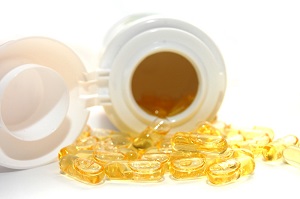 Vitamin D is the silent hero in our lives. Vitamin D is essential for bone health and it has also been suggested that it may also benefit in protecting us against colds and fighting depression.It can be found in fatty fish such as herring, mackerel, sardines and tuna. However, the body receives most (80%-90%) of its vitamin D from exposure to sunlight which is absorbed through your skin.
Vitamin D is the silent hero in our lives. Vitamin D is essential for bone health and it has also been suggested that it may also benefit in protecting us against colds and fighting depression.It can be found in fatty fish such as herring, mackerel, sardines and tuna. However, the body receives most (80%-90%) of its vitamin D from exposure to sunlight which is absorbed through your skin.
Sunlight is the best way to get your vitamin D. However, because of the associated risk of skin cancer, there are no official recommendations from Doctors to go outside to catch some rays. A small amount of sun exposure without sunscreen can do the trick. Just 20 to 25 minutes of exposure is helpful. Unfortunately if you live at higher latitudes, its winter, or your skin has a darker pigment, you are unlikely to get your daily needs.
When you can’t get enough sunlight, fatty fish is a great substitute. Common options of fish containing vitamin D include salmon, trout, mackerel, tuna, and eel. A 3-ounce sockeye salmon fillet contains about 450 international units (IUs) of vitamin D where 600 IUs is the recommended dietary allowance. A bonus to eating fatty fish is the heart healthy omega-3 fatty acids.
Canned tuna fish and canned sardines both contain vitamin D, and usually less expensive than fresh fish. They also have a longer shelf life, allowing you to stock up on vitamin D when they are on sale. Canned light tuna has the most vitamin D at about 150 IUs per 4 ounces. Canned albacore tuna has about 50 IUs per 4 ounces, while canned sardines have a little more than 40 IUs per two sardines.
Most types of cow’s milk sold in grocery stores are fortified with vitamin D. An 8 ounce glass of milk contains at least 100 IUs of vitamin D, while a 6 ounce serving of yogurt contains 80 IUs. You can also choose many orange juice brands that also fortify their juice with vitamin D. An 8 ounce glass of juice usually has around 100 IUs of vitamin D, but amounts can vary from brand to brand, so check the nutritional label.
And when all else fails, vitamin D supplements can help get your proper daily dose. The benefits of vitamin D supplements is you can take your dose all at one time. Too much vitamin D can be toxic so be careful not to consume too much. The IOM sets the upper limit at 4,000 IUs for people aged 9 and older (includes all sources – food, sun, and supplement). Talk to your doctor before choosing a dosage.
Breakfast can also help you get your daily intake of vitamin D. Eggs are a convenient way to get vitamin D. Vitamin D in an egg comes from its yolk, it’s important to use the whole egg, not just the whites. One egg yolk will give you about 40 IUs. But remember, one egg contains about 200 milligrams of cholesterol, and the American Heart Association recommends consuming no more than 300 milligrams a day for heart health. Many cereals are also fortified with vitamin D, such as Multi Grain Cheerios. A 1 cup serving of Multi Grain Cheerios with one-half cup of fortified milk is about 90 IUs. Add your 8 ounce glass of fortified orange juice and you’re up to almost 200 IUs.
Vitamin D has many uses and is essential for the formation, growth, and repair of bones and for normal calcium absorption and immune function. With the options listed above, you’ll get your daily dose of vitamin D, even if it is the dead of winter.
For more articles go to http://clubonefitness.lifestyleezine.com

